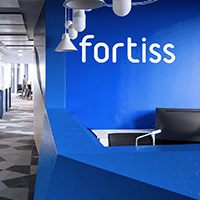What overarching developments and trends are currently shaping the landscape of production and what opportunities and challenges do these changes present for companies in the manufacturing industry?
A lot of the momentum in manufacturing right now comes from automation, AI, and better connectivity. These technologies are making factories smarter and more connected, which means they can react in real-time, handle changes on the fly, and just run more efficiently overall. AI in particular plays a big role and it’s not just about automating tasks, but also about giving machines the ability to understand their actions and associated data, predict problems before they happen, and even suggest improvements based on what they learn over time.
Connectivity and the use of IoT devices make sure everything in the factory is talking to each other, so processes can flow more smoothly, and data doesn’t get stuck in silos. That opens the door to a lot of opportunities: better productivity, more personalized products, and smarter maintenance planning, just to name a few. But of course, the flip side is that all these systems need to work together – and that’s where the real challenge lies. Getting different tools and systems to talk to each other and figuring out how to implement all this tech without disrupting operations is no small feat.
What is the importance of flexible architectures in intelligent manufacturing systems, and what requirements must system designs meet to ensure adaptability, future-proofing, and economic viability in real-world production environments?
As factories get more advanced, with more sensors, machines, and software in the mix, they also get more complex. That’s why flexibility is so important. You want systems that let you tweak things easily without rebuilding everything from the ground up every time something changes. Especially as we shift toward more autonomous production, it’s critical that operators can access and understand the information they need, even when it’s spread across different formats or systems.
That’s where knowledge-augmented architectures come in. These systems are designed to gather all that scattered information in a smart, connected way. They help us analyze data automatically and make better decisions faster, right there on the factory floor. So instead of spending time digging through different systems, everything is streamlined to support adaptability, efficiency, and long-term use.
In small batch production, operating costs often exceed the initial investment in the total cost of ownership. How can companies balance this imbalance? What strategies, including the roles of collaborative robotics, canbe used to make these systems cost-effective in everyday operations?
In settings like small batch production, it’s not just about how much the machines cost, it’s the ongoing costs that really add up. So, to make automation viable, especially in these more dynamic environments, we need systems that are easier to program and more adaptable to changes. At fortiss, we’re working on that in our Robotics Lab, where we’ve built tools and methods to make the tech more practical and accessible.
One approach we’re focusing on is using structured knowledge so machines can understand abstract or vague instructions from humans. That makes it easier for operators to interact with the systems, even if they’re not experts. We’re also making strides in Teaching by Demonstration, basically showing robots how to do tasks instead of programming them line by line. This could be by guiding them physically, using a controller, demonstrating a task, or even showing a video. Then, human actions need to be recognized and translated into appropriate robot actions, so that the robot can repeat the task reliably.
And when we mix this with natural language and simulations, we get systems that can learn even faster and handle a wider range of tasks with less downtime. All of this helps bring down the cost of training and operation, making automation a lot more feasible even in smaller or more flexible production runs.
One of the biggest challenges in smart manufacturing and collaborative factories is dealing with errors and uncertainties. How can AI support here?
One of the key things we do is build formal models of knowledge, basically, structured ways to represent everything from how machines behave to safety rules and error-handling procedures. This makes it easier for manufacturing systems to understand what’s going on in the factory and to reason about it.
So, when something goes wrong, the system isn’t just reacting blindly, it can actually figure out what the problem is, evaluate the options, and take the best course of action. When you combine this with real-time data, AI can even anticipate issues before they happen. For example, it can recognize strange patterns that suggest a machine might fail soon and alert the right people or even trigger a fix automatically.
And in more dynamic environments where machines and people are working together, that same knowledge framework keeps everything aligned. It helps coordinate who does what, when, and how to respond to unexpected situations—across all systems involved.
Looking ahead, where do you see the future of research and development in smart manufacturing heading?
Looking forward, we’re going to see even more autonomy and deeper system integration in smart manufacturing. At fortiss, we’re working on ways for factories to not just collect data, but actually make decisions and act on it without constant human input. That means machines that can adapt on the fly, changing how they operate depending on what's happening around them, whether that’s a shift in customer demand, equipment performance, or maybe even supply chain disruptions.
Collaborative robotics is also a big piece of the puzzle. The goal is to make interactions between people and machines feel natural, with user-friendly interfaces that let non-experts control or teach robots without needing a programming background.
On top of that, edge computing is playing a bigger role. Processing data right at the source, on the shop floor, means decisions can be made faster, without waiting for the cloud. And AI will keep evolving, especially when it comes to things like predictive maintenance and quality assurance, where spotting problems before they even surface can save a lot of time and money.
In short, the future is about making factories more self-sufficient, adaptive, and scalable. Ready to handle whatever comes next, with minimal friction.


